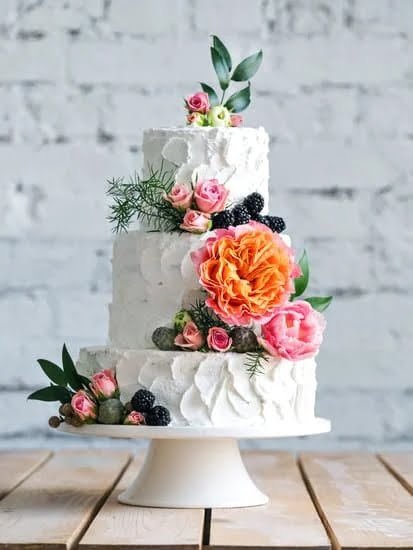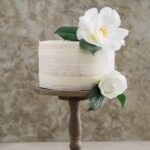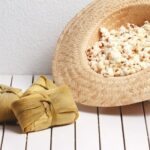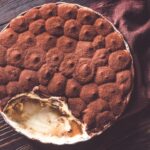Cake decorating frosting plays a crucial role in the overall appearance and flavor of a cake. Choosing the right frosting can make or break the final product, affecting not only the visual appeal but also the taste and texture.
With various types of frostings available, it can be overwhelming to decide which one to use for your cake decorating needs. In this article, we will explore the importance of selecting the right frosting and provide valuable insights into the different types, pros and cons, tips for choosing, techniques for using, common mistakes to avoid, alternative options, and more.
When it comes to cake decorating, the type of frosting used can significantly impact the outcome. From buttercream to fondant and cream cheese frosting, each type has its own unique qualities that can enhance or detract from the overall effect. Understanding these differences is essential in achieving your desired cake decorating results. Additionally, considering factors such as taste, ease of application, and versatility can help in making an informed decision when choosing a frosting for your cakes.
In this comprehensive guide, we will delve into various aspects of cake decorating frosting to equip you with the knowledge and skills needed to elevate your cake decorating game. Whether you are a novice baker or an experienced pastry chef, understanding the importance of selecting the right frosting is fundamental in creating visually stunning and delicious cakes that leave a lasting impression.
So let’s dive into the world of cake decorating frostings and uncover everything you need to know to master this essential element of baking and pastry arts.
Types of Cake Decorating Frosting
When it comes to cake decorating, choosing the right frosting is essential for achieving the desired look and taste of your masterpiece. There are several types of cake decorating frosting that can be used, each with its own unique properties and applications. Understanding the different types of frosting will help you make an informed decision when it comes to decorating your cakes.
Buttercream
Buttercream is a classic choice for cake decorating due to its creamy texture and versatility. It is made from butter, powdered sugar, and flavorings, and can be easily colored and flavored to suit any design or theme. Buttercream is perfect for piping decorations, adding swirls, and creating smooth finishes on cakes.
Royal Icing
Royal icing is a hard-drying icing made from powdered sugar, egg whites, and flavorings. It is commonly used for intricate designs such as lacework, intricate piping details, and creating 3D decorations. While royal icing dries to a hard finish, it can also be thinned down for flooding techniques to create a smooth surface on cookies or cakes.
Fondant
Fondant is a pliable icing that can be rolled out and draped over cakes for a smooth finish. It is popular for creating elaborate sculpted designs and decorative elements on cakes. Fondant can also be used to create three-dimensional figures and shapes that are not possible with other types of frosting.
Cream Cheese Frosting
Cream cheese frosting is a rich and tangy option that pairs well with various cake flavors such as red velvet or carrot cake. It has a softer consistency than buttercream but holds up well for simple decorations like swirls or ruffles.
In addition to these popular options, there are many other types of cake decorating frosting available, each with its own unique qualities that cater to different tastes and design preferences.
Pros and Cons of Each Type of Frosting
When it comes to cake decorating, the type of frosting you use can make a big difference in the final result. There are several options to choose from, each with their own pros and cons. Buttercream is one of the most popular choices for cake decorating frosting due to its creamy texture and easy application.
It can be flavored and colored in many ways, making it versatile for any cake design. However, buttercream can be quite sweet, which may not appeal to everyone’s taste.
Another common type of frosting is royal icing, which dries hard and is often used for intricate designs and details on cakes. While it is great for creating decorative elements, royal icing is not typically used as an all-over frosting due to its firm texture. Fondant is another popular choice known for its smooth finish and ability to hold intricate designs. However, fondant has a reputation for being overly sweet and lacking in flavor.
Cream cheese frosting is loved for its tangy flavor and creamy texture but may not hold up well in warm temperatures or overly humid environments. Each type of frosting has its own set of advantages and drawbacks that should be considered when choosing the right one for your cake decorating needs.
In addition to taste considerations, ease of application and versatility are important factors when choosing a cake decorating frosting. Some frostings are better suited for specific techniques such as piping or creating textures, while others may be more forgiving for beginners. It’s important to consider these factors along with the overall design of your cake when selecting the best frosting option.
Tips for Choosing the Right Frosting for Your Cake
When it comes to choosing the right frosting for your cake, there are several factors to consider in order to ensure a successful and delicious outcome. Whether you are making a birthday cake, wedding cake, or just a special treat for yourself, selecting the perfect frosting is crucial. Here are some tips to help you make the best choice when it comes to cake decorating frosting:
- Matching the flavor with the cake: One of the most important considerations when choosing frosting is how well it complements the flavor of the cake itself. For example, a rich chocolate cake may be better paired with a classic buttercream or indulgent chocolate ganache, while a light lemon cake could benefit from a zesty cream cheese frosting.
- Considering the design: The overall design and aesthetic of your cake should also influence your choice of frosting. If you’re going for a smooth and elegant look, fondant may be the best option. If you want to create intricate decorations and piping, royal icing or buttercream would be more suitable.
- The climate: It’s essential to take into account the climate in which your cake will be served. For example, if you are decorating a cake for an outdoor event in hot weather, you’ll want to steer clear of frostings that are prone to melting, such as whipped cream or delicate buttercreams.
By carefully considering these factors and taking into account the flavors, design, and climate of your cake’s intended serving environment, you can ensure that you choose the perfect frosting for your masterpiece.
Remember That Each Type of Frosting Has Its Own Unique Texture and Taste
profile. Be sure to consider what will work best with.
your specific recipe.
Techniques for Using Cake Decorating Frosting
When it comes to cake decorating, mastering different techniques for using cake decorating frosting is essential for achieving professional-looking results. Here are some key techniques to consider:
- Piping: Piping is the process of applying frosting using a piping bag and various tips to create different designs and patterns. This technique allows for intricate details such as borders, flowers, and writing on the cake.
- Smoothing: Achieving smooth surfaces on your frosted cake is important for a polished look. Using a bench scraper or offset spatula, you can smooth out the frosting evenly around the sides and top of the cake.
- Creating Textures: Texture can add visual interest to your cake design. Techniques such as ruffling with a piping bag, using combs or textured mats, or even simple brush strokes with an offset spatula can create unique effects on the frosting.
- Adding Decorations: Once the base frosting is applied, adding decorations such as sprinkles, edible pearls, fondant cutouts, or even fresh flowers can enhance the overall appearance of the cake.
Mastering these techniques will take practice and patience but will greatly improve your cake decorating skills.
It’s important to note that different types of frosting may lend themselves better to certain techniques. For example, buttercream is great for piping intricate designs due to its pliability, while fondant is ideal for creating smooth surfaces and adding decorative elements. Consider the texture and consistency of your chosen frosting when selecting which techniques to use.
As you become more comfortable with these basic techniques, don’t be afraid to experiment with more advanced methods or combine different techniques to create unique designs that truly showcase your creativity and skill in cake decorating.
Common Mistakes to Avoid When Using Frosting for Cake Decorating
When it comes to cake decorating, using the right frosting is essential to achieving a beautiful and delicious end result. However, even with the best frosting, there are common mistakes that can hinder your decorating efforts. Avoiding these pitfalls can help ensure that your cakes not only look stunning but also taste amazing.
One common mistake to avoid when using frosting for cake decorating is overmixing. Overmixing the frosting can cause it to become too thin, making it difficult to achieve smooth and clean lines when piping or spreading it onto the cake. It’s important to mix the frosting just until all the ingredients are fully incorporated to maintain the desired consistency.
Another pitfall to watch out for is using the wrong consistency of frosting for your decorating needs. Different techniques, such as piping or smoothing, require different consistencies of frosting. For example, stiff buttercream is ideal for creating intricate designs with a piping bag, while a softer consistency is better suited for spreading smoothly over the entire cake. Using the wrong consistency can lead to frustration and less than satisfactory results.
Furthermore, failing to consider temperature and humidity when working with frosting can lead to issues such as melting or drying out too quickly. In warm climates, certain types of frosting may need adjustments in order to hold up during decorating. Conversely, in cooler or drier conditions, some frostings may need additional moisture added to prevent them from cracking or hardening too quickly.
| Common Mistakes | Avoidance Tips |
|---|---|
| Overmixing | Mix frosting just until ingredients are fully incorporated |
| Wrong Consistency | Match frosting consistency to specific decorating techniques |
| Climate Consideration | Adjust frosting as needed for temperature and humidity |
Alternative Options for Cake Decorating
When it comes to cake decorating, there are plenty of alternative options for frosting beyond the traditional buttercream, royal icing, and fondant. Whipped cream, for example, is a light and airy option that can be flavored in various ways to complement different types of cakes. It is important to note that whipped cream frosting has a shorter shelf life compared to other frostings, so it’s best used on cakes that will be served and consumed relatively soon after decorating.
Another popular alternative is chocolate ganache, which is made by combining chocolate with hot cream to create a smooth and rich frosting. Chocolate ganache is an excellent choice for those who want a decadent and indulgent frosting for their cakes. This type of frosting pairs well with rich chocolate cakes or even with fruity cake flavors such as raspberry or orange.
For those looking for non-traditional frostings for their cake decorating needs, there are plenty of options available. Cream cheese frosting is a tangy and creamy option that works well with carrot cake, red velvet cake, and other similar flavors. It provides a delicious contrast to the sweetness of the cake itself.
Additionally, Italian meringue buttercream offers a light and fluffy texture with a silky smooth finish. This type of frosting is made by adding hot sugar syrup to whipped egg whites and butter, resulting in a luscious frosting that holds up well in warmer climates.
Overall, considering non-traditional options for cake decorating frosting opens up a world of possibilities when it comes to creating unique and delicious cakes. Each type of frosting brings its own set of advantages and considerations, so it’s crucial to take into account factors such as flavor pairing, climate conditions, and desired texture when choosing the right frosting for your cake decorating needs.
Conclusion
In conclusion, choosing the right frosting for cake decorating is crucial in achieving the desired taste and visual appeal. Whether it’s buttercream, royal icing, fondant, or cream cheese frosting, each type has its own pros and cons that should be considered based on the specific needs of the cake being decorated. It’s important to match the flavor of the frosting with the cake itself, while also taking into account the design and climate to ensure a successful outcome.
When using cake decorating frosting, it’s essential to master techniques such as piping, smoothing, creating textures, and adding decorations to achieve professional-looking results. Additionally, it’s important to avoid common mistakes like overmixing and using the wrong consistency which can affect the overall appearance and taste of the cake.
While traditional options like buttercream and royal icing are popular choices for cake decorating, there are also alternative options such as whipped cream and chocolate ganache that offer a unique twist. Regardless of the type of frosting chosen for cake decorating, it’s essential to experiment with different options and techniques to find what works best for individual preferences.
In summary, with proper consideration of factors such as taste, ease of application, versatility, and more, along with mastering various techniques for applying frosting to cakes, anyone can achieve beautiful and delicious results when decorating their cakes with frosting.
Frequently Asked Questions
What Frosting Is Best for Decorating Cakes?
The best frosting for decorating cakes is typically a buttercream frosting. This type of frosting holds its shape well, making it perfect for piping intricate designs and borders onto cakes. It also comes in various flavors and can be easily colored to create vibrant decorations.
What Frosting Do Professionals Use for Cakes?
Professionals often use Swiss meringue buttercream or Italian meringue buttercream for decorating cakes. These types of frosting are known for their silky smooth texture and stability, allowing decorators to create stunningly intricate designs on cakes. They also have a less sweet taste compared to traditional buttercream.
What Is the Smooth Icing Used to Decorate Cakes?
The smooth icing used to decorate cakes is commonly known as fondant. Fondant is a pliable sugar paste that can be rolled out and draped over a cake for a flawless, smooth finish. It provides a clean canvas for adding details such as flowers, patterns, and sculpted decorations to the cake’s surface.

Welcome to our cake decorating blog! My name is Destiny Flores, and I am the proud owner of a cake decorating business named Cake Karma. Our mission is to provide delicious, beautiful cakes for all occasions. We specialize in creating custom cakes that are tailored specifically to each customer’s individual needs and tastes.





